The harmony of the tree and the pot; life force and divinity dwelling in a condensed form of eternity. In order to fully appreciate bonsai, one should view each tree from several key perspectives.
This post is also available in: CN (CN) TW (TW) JP (JP)
Appreciating condensed seasonal beauty and spatial harmony
Bonsai originated in ancient China, with the ruling and intellectual classes of the Tang Dynasty enjoying the hobby of planting trees in small pots. After being introduced to Japan at the start of the Kamakura Period, bonsai developed independently, becoming a hobby popular even among ordinary citizens during the later years of the Edo Period (1603-1868) and retaining such status to this day.
The culture of planting plants in pots can be seen throughout the world, but bonsai are admired for the overall beauty of the plant integrated with the pot, stones, and other elements. It’s impossible to incorporate the majesty of natural landscapes in the garden or indoors. However, it’s entirely possible to evoke grandeur, grace, wabi-sabi (subdued refinement) and other types of natural beauty through a single bonsai. Trunks twisted into shape by snowstorms that leave bark roughened; trunks weathered over many months and years and bleached into jin (bare-stripped branches) and shari (barkless section of trunk) until they are hollowed out. The world of bonsai uses Japanese sensibilities and techniques to uniquely express the vital force of these trees that continue to stand strong and survive through all seasons.
It can be said that bonsai are an art form for the worship of the natural world, born from the nature of each season and the Japanese culture of living in harmony with them.
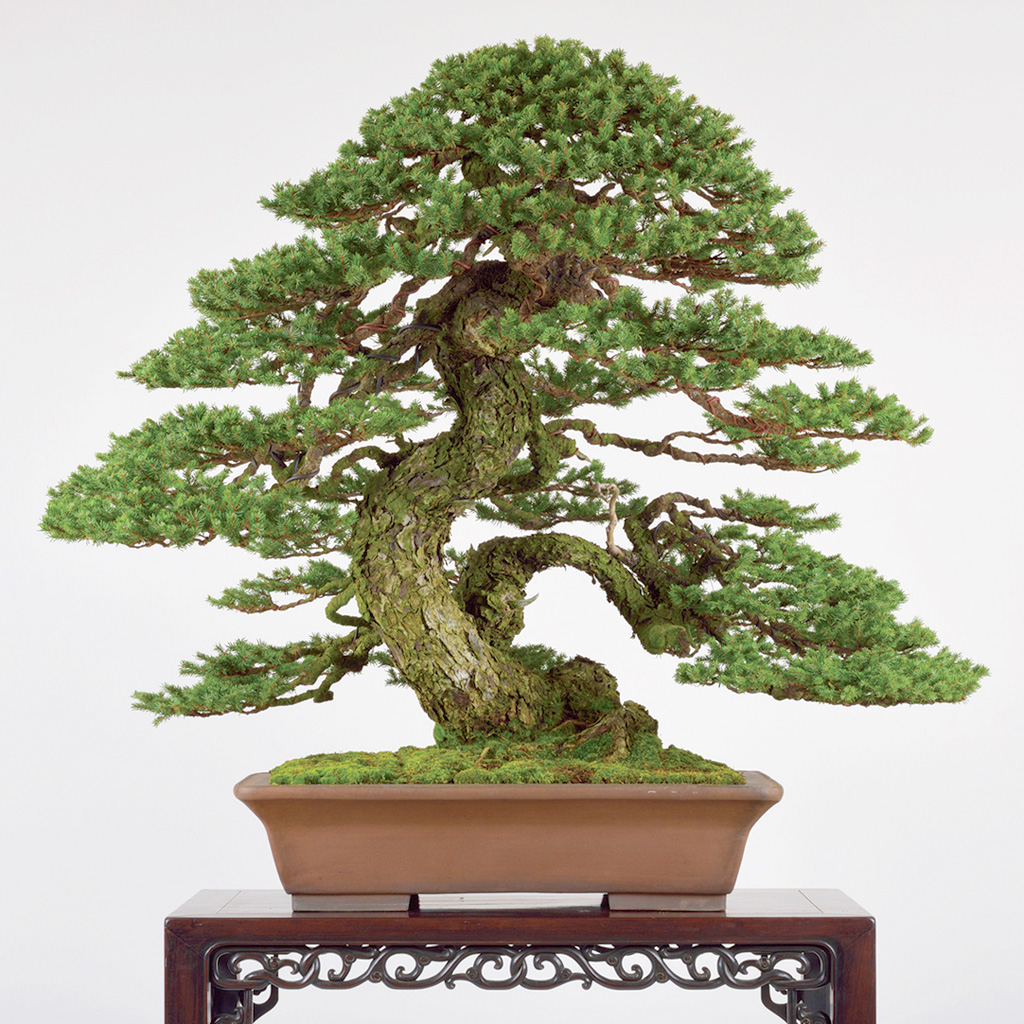
Enjoying magnificent landscapes indoors via bonsai
Bonsai originated in ancient China, with the ruling and intellectual classes of the Tang Dynasty enjoying the hobby of planting trees in small pots. After being introduced to Japan at the start of the Kamakura Period, bonsai developed independently, becoming a hobby popular even among ordinary citizens during the later years of the Edo Period (1603-1868) and retaining such status to this day.
The moment for bonsai to shine is when they are beautifully displayed at exhibitions or inside homes. The formal place for displaying bonsai inside homes is the tokonoma (alcove), which is something akin to a stage for seasonal observances, especially when welcoming guests. Displays in the tokonoma are called tokokazari, while displaying the bonsai on a mat with folding screens at the side of the bonsai is called sekikazari.
Tokokazari are composed fundamentally of three elements: main tree, accessory and hanging scroll. When the main tree is a pine, accessories such as flowering plants or grasses evoke a sense of the season. The main tree is placed so that its branches flow towards the hanging scroll, which is selected not to stand out for its own design but rather to highlight the main tree. Sekikazari use two elements, the main tree and an accessory.
Increasingly, even Japanese-style houses are built without tokonoma, and in apartments it is not uncommon for a tatami-mat room to be completely absent. Maintaining the principles of harmony and beauty cultivated since times long past allows hobbyists to show off their skills when incorporating bonsai into contemporary living spaces, and is one of the enjoyable aspects of the art of bonsai.
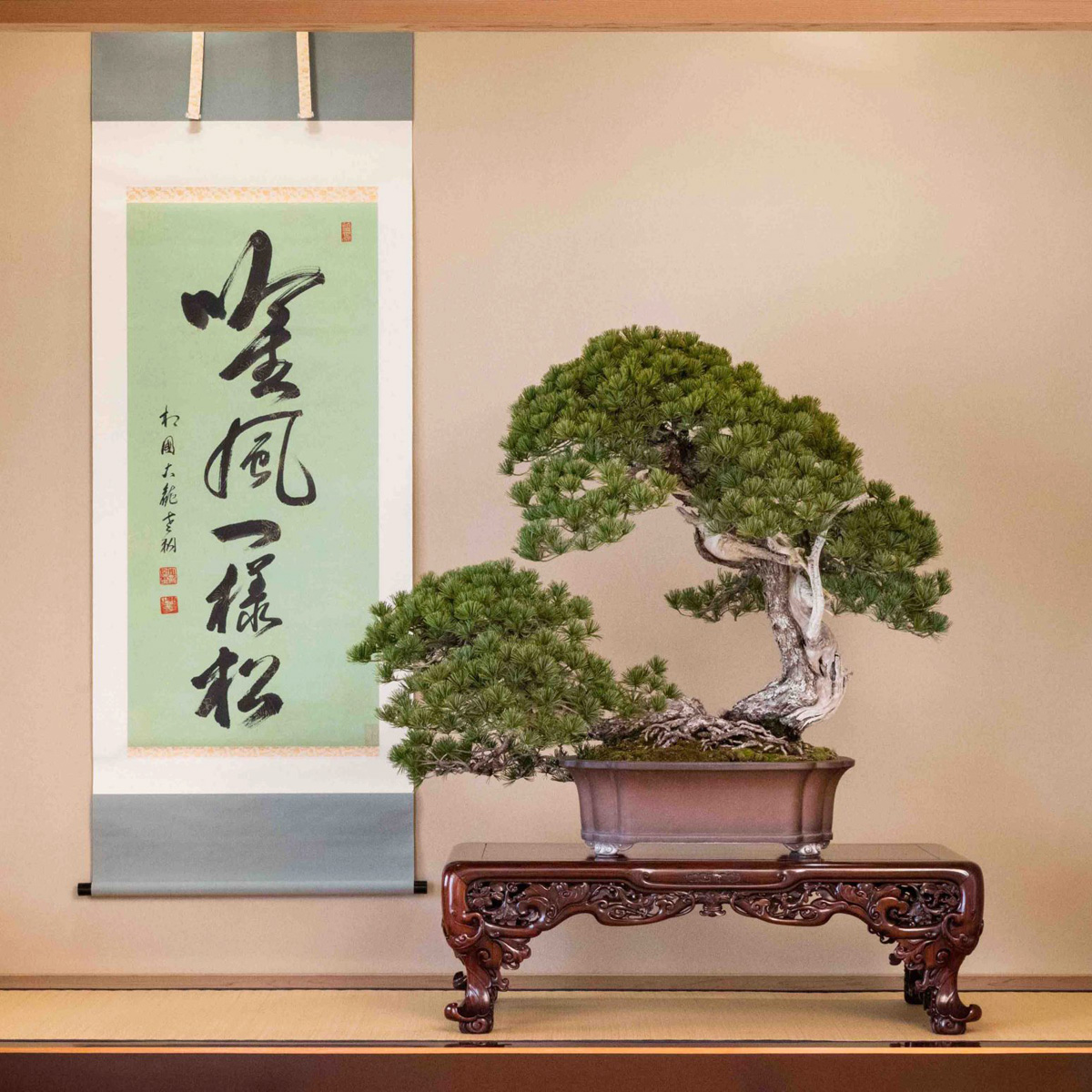
Savoring the overall look and individual elements is key to bonsai appreciation
When viewing bonsai, first position yourself directly in front of the tree and look at the pot, the stand and the overall composition before moving on to the finer details.
Set your viewpoint to around halfway up the tree and take in the composition from the ground up, savoring the charm in sections such as the exposed roots, base of the tree, trunk, branches, leaves and flowers.
A Japanese white pine, with the sturdy exposed roots gripping tightly to the soil evoking the dignity of an old tree. The gentle curve of the tree’s base creates a sense of grace and generosity, while the roughened bark suggests having survived through long years of hardship and the green leaves convey the powerful life force of the tree.
Bonsai are created through many years of hard work, with some maintained for hundreds of years. Many feel that part of their unique appeal is the fact that they require so much time and thought. On the other hand, it is also enjoyable to imagine the future form of a promising young tree.
Generally, bonsai become increasingly appealing with age, stirring emotions in viewers. Thinking of them in human terms, they could be seen as having attained perfection in the later years of life.

Leaves
Small, dense foliage creates the sense of a large tree. Foliage can be increased or thinned out by pinching off buds, removing leaves and so on.
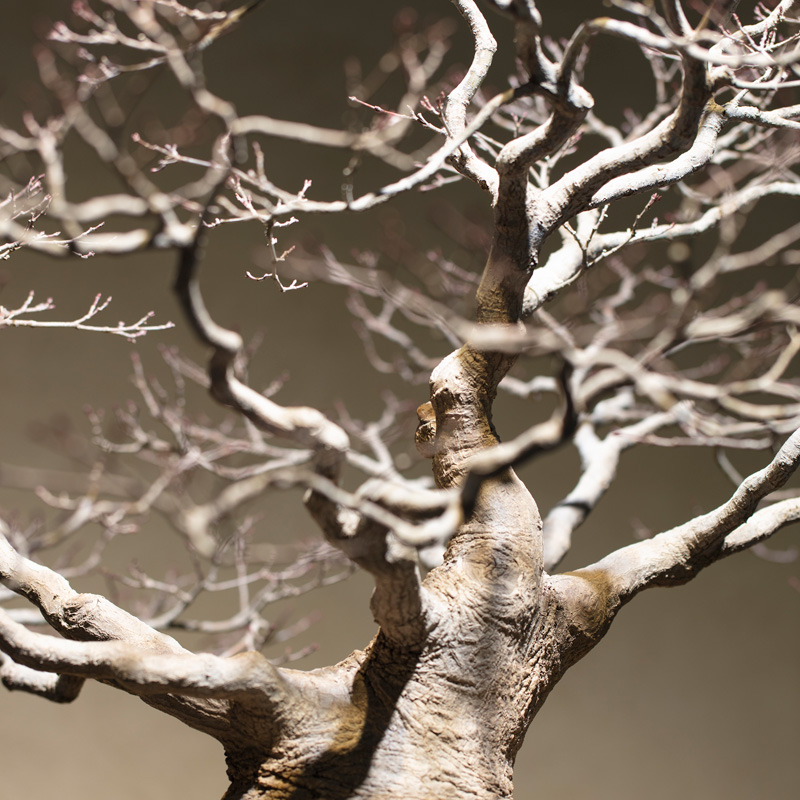
Taper and branch distribution
The tapering of the trunk towards the tree’s apex is called kokejun (taper), and the more effortless and natural it appears, the more acclaimed the bonsai will be as a “tree with good taper.” By making the gaps between branches smaller the higher they are on the trunk, the bonsai artist creates good balance and makes it easier to convey the sense of a large tree.
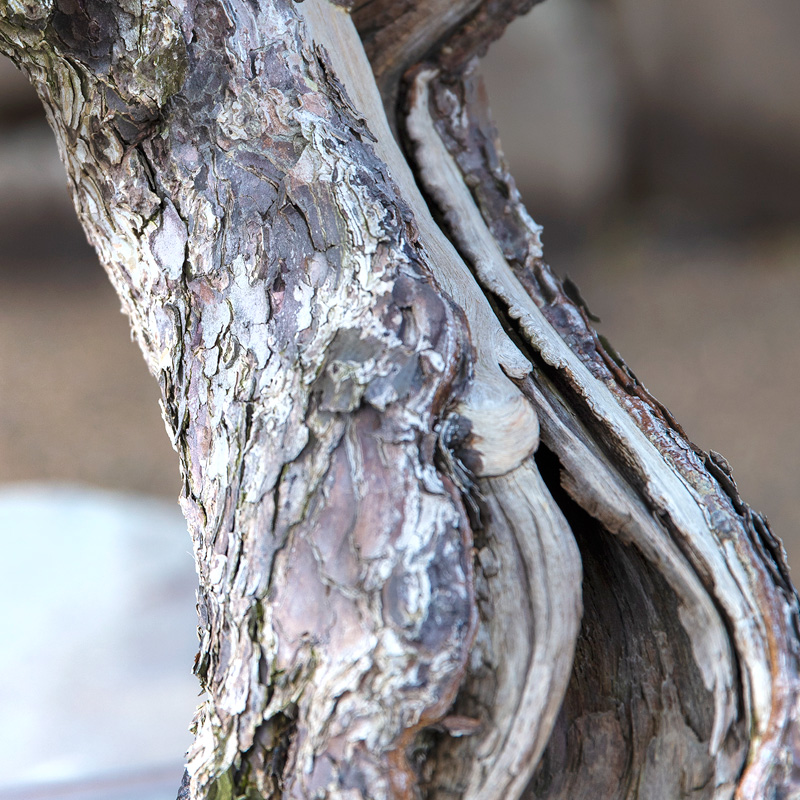
Bark
It is also crucial to create the appearance of age through the bark of a bonsai. Roughened bark is the easiest way to bring out the sense of an old tree.

Tree base
The section at the base of the trunk is often considered a bonsai’s main attraction, and its appearance, thickness and other qualities have a direct bearing on the tree’s appeal.
Exposed roots
Roots spreading firmly over the soil surface lend the tree a sense of strength and stability.
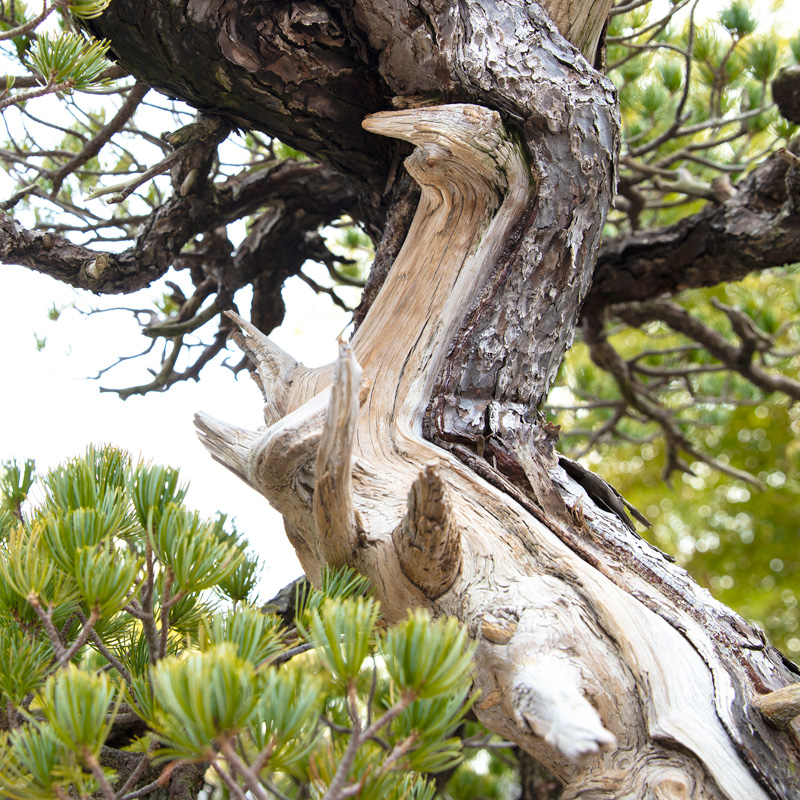
Jin (bare-stripped branches) and shari (barkless section of trunk)
Trees such as pines and Chinese junipers which have weathered many years may have trunks or branches where sections have died away but their form has remained as deadwood. Showing the white of the trunk creates an attractive contrast with the green of the leaves. The ends of branches that have been treated in this manner are called jin, while sections of trunk with the same effect are called shari.



